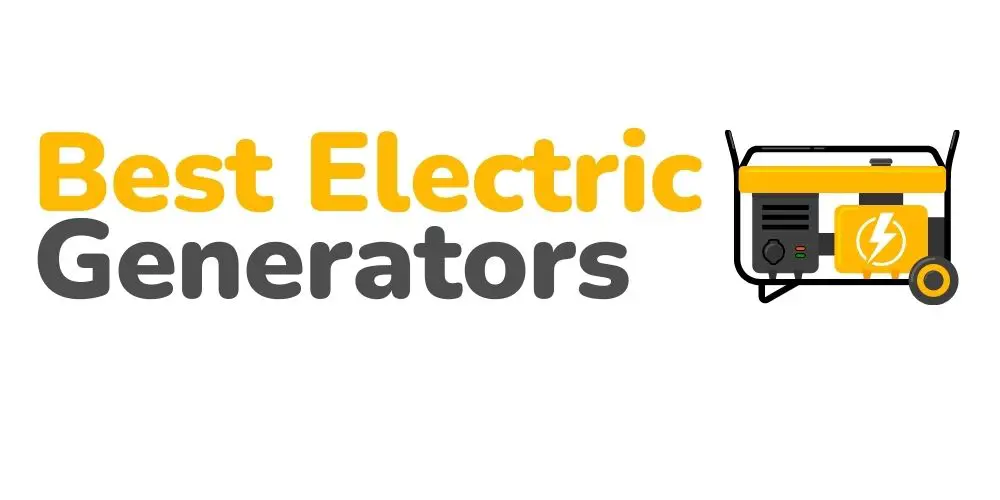Yes, you can use extension cords with your portable generator. But this is only for outdoor applications.
These extension cords are suitable for powering up outdoor items only. If you are looking to power up indoor things, these cords are not appropriate. Your best option in this regard will be a transfer switch.
Even though you are using your portable generator with extension cords within your home or recreational vehicle, these are only for powering outdoor items.
Extensions Cord is Essential for Safe Operation
You can use an extension cord if you don’t have a long cord to power up appliances with your portable generator.
These cords are not a permanent powering solution for your appliances and devices. If you continue to use it frequently for long periods, it will deteriorate. Therefore, they also become prone to fire hazards or severe electric shocks.
Don’t overload them and run through any walls, ceilings, or floors. If you rely too much on these electric cords, you need more outlets in your home or your RV.
You should not use multi-plug outlets with your extension cords. Also, make sure you don’t use any damaged extensions.
And using these cords with polarized 3-prong plugs is the best practice. But, of course, you have to make sure that you only go for the UL, CSA, or ETL cords listed. And never use a 3-prong plug with an outlet that has 2 slots in it.
How Do Gauge and Length Correlate?
Wire gauge sizes are expressed in numerical values. They range from AWG 4/0 to AWG 40. A wire will have a larger diameter with a lower number, and the diameter will be smaller with a higher number. AWD here is the numerical standard that has been established for wire gauge sizes within the US.
But that is not the only thing that you need to worry about here. The length of the wire also has a role to play. With the longer distance, the resistance inside the wire increases. You can decrease this resistance by reducing the length of the wire. So, a long wire will carry a lower amount of current in it.
Now, if you put them both together, you will see that there will be plenty of resistance in the flow of current with a thinner and longer wire. However, if you reduce the gauge, make it thicker, and reduce the length, electric current will flow through it effortlessly. So, a thinner, longer wire will be more resistant, but a thicker, shorter write will be more conductive.
When you are using 25 to 50 feet extension cords, go for:
- 10 to 12 gauge for 16 to 20 Amps.
- 14 gauge for 14 to 15 Amps.
- 16 gauge for 1 to 13 Amps.
When you are using 100 feet extensions cords, choose:
- 10 gauge for 16 to 20 Amps.
- 12 gauge for 14 to 15 Amps.
- 14 gauge for 11 to 13 Amps.
- 16 gauge for 1 to 10 Amps.
Going for the 150 feet extension cords, then choose;
- 10 gauge for 11 to 15 Amps.
- 12 gauge for 8 to 10 Amps.
- 14 gauge for 1 to 7 Amps.
Wire Gauge Requirements
Primarily, you need to keep in mind two different requirements for choosing the best extension cord. First, and we have mentioned them already, they are wire gauge and wire length.
These power cords come with AWG (American Wire Gauge) rating for wire gauge. Now amperage is how much power these wires are going to carry in them. As mentioned above, a lower AWG number means the wire is thicker and has a bigger diameter. It also means it comes with a higher capacity cord.
To choose the best gauge, you need to determine the power cord gauge on your equipment. This is a number that is mentioned on the wire. For this, you will need an extension cord that is at least a grade or a rating lower.
The extension cord will be at least a grade thicker and will provide more power to your equipment. There are cases when you might need an even lower gauge than that.
Guidelines for the Size of Generator Cords
The size or length of the wire is also going to impact the current flow in it. With the longer cord, the current has to travel farther. Increased length reduces the total amps that will be reaching your equipment. This will create more strain on your equipment.
For the best results, you need to go for the shortest extension cord. It should never be the same length as the power cord because extension cords have resistance in them. With longer wires, you are introducing more resistance to the circuit. As a result, your equipment will become hungry for more power, and it will significantly reduce the lifespan of the motor on your equipment.
Portable Generator Outlet Types
If you are a novice user, then your portable generator terminology can confuse you a lot. But there are different types of outlets that portable generators have. For example, NEMA and duplex types are common. NEMA stands for North American National Electrical Manufacturers, and it is an association that labels these plugs for the generators.
Any common plugs are rated for 125V to 600V with 15A to 60A, plus they are grouped in either single or three-phase. With these generators, you will most commonly worry about the single-phase variants.
Typically, portable generators come with 20A to 30A ratings, and they will use at least a single locking plug that will either be an L5 and L10 or an L14 along with two standard duplex plugs. Some of them also come with TT-30 for travel-trailer use.
You have to match the rating with the type. This is critical because a 20A receptacle will have a different design than a 30A receptacle. So, the pronged configuration will differ.
- NEMA 5 is the standard duplex or non-locking plug type, and it’s a standard 2 to 3 prong plug used in your house. There is a variant designation called the 5-15R, and most of the appliances and extension cord will have this. The 5-20R has a T on its larger prong, but they’re not very common.
- NEMA L comes with a twist lock and is for different phases and voltages. With the locking mechanism, these plugs are not going to come out on their own. This plug has other variants, such as L5-125V, L6 250V, L10, and L14 in 125V and 250V variants.
- TT or RV30 and NEMA 10 are frequently confused with one another. But the NEMA 10 is distinguishable due to its L blade on its top prong.
Can I use a 14 gauge extension cord on a generator?
Yes, you can use a 14 gauge extension cord on your generator. But if you are going from 25 to50 feet cord length, it can carry 14A to 15A current in it. A 100 feet cord of 14 gauge will carry 11A to 13A current, while a 150 feet long extension cord of 14 gauge will only carry 1A to 7A current. So, make sure you put it to the right use.
Do I need a special extension cord for my generator?
According to the application you will use it for, you will need to go for your extension cord’s right gauge and size. Thicker and shorter cords are more conductive, while shorter and thinner cords are more resistive.
How do you plug a generator into an extension cord?
You need first to start the generator and then put the extension cord into it. After that, you need to plug the load into the extension cord. When you are looking to disconnect, then you will have to do the exact opposite when unplugging.
How many watts can a 12 gauge extension cord handle?
A 12 gauge extension cord is designed to handle 16A of current and is rated for 1920W. So, it’s a pretty powerful wire.
Can you put 2 generator cords together?
Yes, you can run extension cords in a series, but they need to have sufficient size and gauge, and the junctions between these cords need to be perfectly rated for the application you are going to use it for.
What is the heaviest duty extension cord?
10, 12, and 14 gauge extension cords are all heavy-duty cords if they are 100 feet, 50 feet, and 25 feet in length, respectively.
Conclusion
You can use a portable generator using extension cords. But you will have to make sure you pick the right extension cord according to the application. Also, you have to pick the right gauge and size for these cords.
Keep in mind that thicker and shorter cords are more conductive, while thinner and longer cords are more resistive. So, you need to pick the right one based on what you will power and for what purpose.


